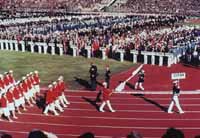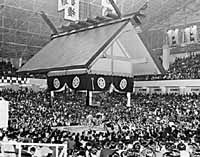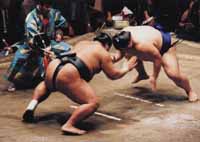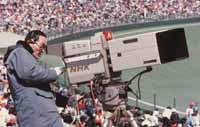
| Take the Olympics, where even a single medal can drive the country wild with excitement, or the 1998 FIFA World Cup, which sent the nation into a football frenzy. NHK pours enthusiasm and expertise into broadcasting sports events that capture the country's imagination, and also uses them as an opportunity to develop new technologies and techniques. The ultimate aim: coverage that doesn't miss a single magic moment. |
From the Olympics to the World Cup |
|
NHK and the Olympics
The Olympic Games had aroused nationwide
attention in Japan since Berlin 1936, when people listened on radio
and rooted for Japan's star swimmer with shouts of "Go, Maehata!"
Olympic broadcasting had always been an important function of NHK, and
it was the Tokyo Olympiad that brought this tradition into the television
era. |
Blanket coverage The World Cup scores! |
|
The first sport to be seen on TV screens in Japan was, naturally, the national sport of sumo, with a broadcast of the Autumn Grand Sumo Tournament of October 1952. The last two days of the tournament were covered, using only two cameras. Satellite broadcasting of sumo on BS-2 started in 1987, and Hi-Vision followed in 1988. Today's BS-2 broadcasts cover every tournament from start to finish, to the delight and gratification of the sport's devoted fans.
|
A revolutionary change in baseball broadcasting came in 1977, when the main camera was moved from behind home plate to a location behind center field. This produced more dynamic footage, although the Central League raised the objection that the change might enable teams to steal their opponents' signals. The new camera position was finally approved the following season.
|
In the days of the old Japan Soccer League (JSL), only a few matches were broadcast each year, but with the birth of the J. League, the total jumped to almost 50. Since 1997, the figure has doubled to almost 100, making football, alongside baseball and sumo, a staple of sports programming. |




